The 0Maths blogFor dyscalculic students:
Teaching for dyscalculia is simply good maths teaching. For the most part, the below refer to how 0maths works out of the box; they are not specific adaptations.
- We offer simplified arithmetic levels for most question types, so numeracy difficulties have a limited impact on understanding other concepts.
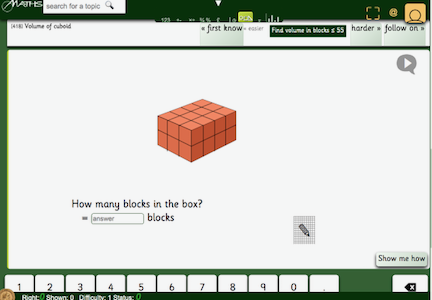
- Visual representations are shown where appropriate.
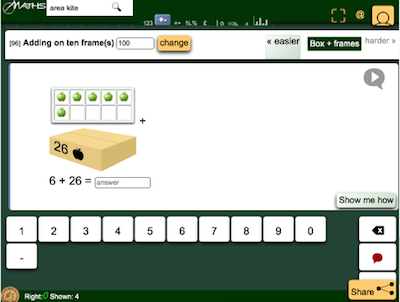
Note also, in the above example that the visual representation discourages counting from zero.
- Optionally, aids such as the hundred square or times tables grid can be made permanently available to a student for all questions, not just multiplication / division. We place them at the start of the questions, so that the user has to scroll to and from the lookup table. This is to make it increasingly more effort than calculating, and so that the answer has to be held in short term memory while the pupil scrolls.
- Learners persist with wrong answers. This is far more useful than being told they're wrong.
- Small steps. For example, when students are learning to add 2 digit numbers, they are taken through the following steps, proceding when they can answer each stage without an error:
- Adding units only without crossing ten;
- Adding 10s only;
- Adding units to make up a 10;
- Add 10s and units to make up a ten;
- Add units crossing 10;
- Add random tens or units;
- Add two random two-digit numbers, with a visual aid / widget);
- Add two random two-digit numbers with no aids;
- Each step can be marked.
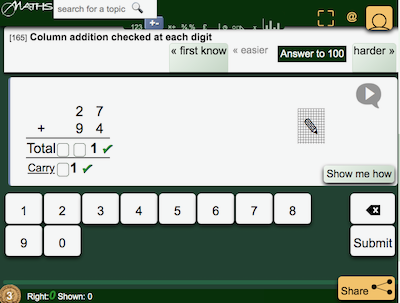
- There are no time limits.
- Links to definitions mean vocabulary is never a barrier.
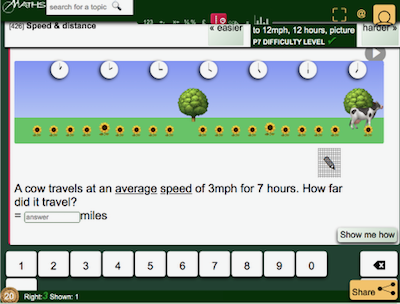
- Hints for common gotchas.
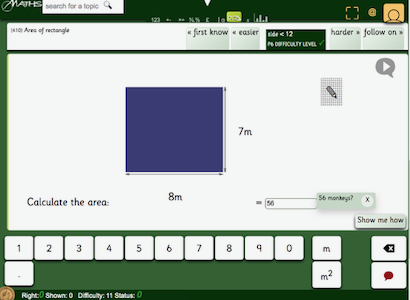
In the above example, the hint is '56 monkeys?' if the user has answered 56 and not altered their answer for 20 seconds. They would also get a hint ("Read the question more carefully") if they answered with the perimeter instead fo the answer, for instance.
- Previous answers are accessible for reference / confidence.
- Students are encourage dto retreat to foundation topics if gaps in their knowledge require it.
- We also screen entered answers for indications of dyscalculia.
 Nurturing maths awesomeness
Nurturing maths awesomeness




